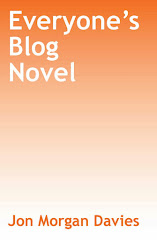This second book in Asimov's Foundation Trilogy covers the history of the Foundation as it rises to power and the Empire as it makes its final decline. Or rather, that is the story it tells in its first section. After that, the tale becomes mostly one about the Foundation.
Taking the story up where he left off, Asimov recounts how the Empire falls through means that are entirely predictable and beyond the control of any one person. A trader sets out to save the Foundation by destroying the Empire and learns later that his actions have no bearing on the Empire's eventual fall and Foundation's triumph. The seeds of the Empire's failure had already been planted and would flower no matter who came about.
Asimov debunks this idea, however, in the book's second half. Years pass, and the Foundation's rulers become greedy and selfish. A set of traders set out to overthrow this ruling class. However, in the midst of their planning, a mutant arises who goes by the name the Mule. This mutant has raised an army that quickly overwhelms the Foundation's strongholds, and now the traders throw their lot in with the Foundation rather than against it.
But the Mule is indominatable. Unpredicted in Hari Selden's mathematical proclamation of future history, this one man DOES make a difference, shattering the Foundation and bringing all under his control, including remnants of the old Empire. Society will not be what Selden had predicted, because one man can change history.
Asimov focuses then on a small cast of characters, including a clown who has escaped from the Mule and who chums along with some traders and a psychohistorian. They are on a quest to find the Secound Foundation, a set of psychohistorians (rather than the physical scientists of the First Foundation), both of whom were set up at the end of the previous Empire to guard society and bring about a universal government and peace faster than would be possible if chaos were let reign. The final chapters bring some surprises and major diagesis of the various ideas and themes. This is much more a book of ideas than of fine or interesting writing and characterization.
Subscribe to:
Post Comments (Atom)






No comments:
Post a Comment